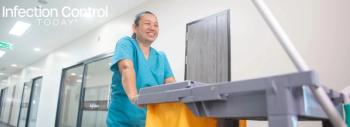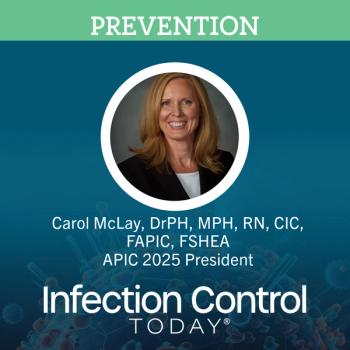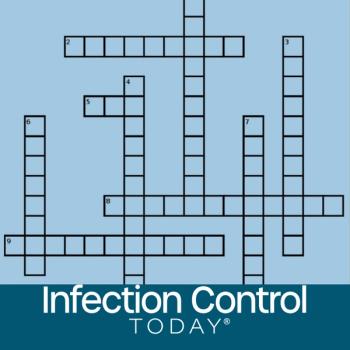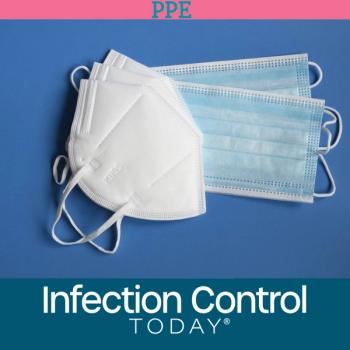
From Concept to Impact: The Findings Unveiled—A Snapshot of IP Realities
This 6-part series will chronicle the journey of 2 infection prevention leaders, Brenna Doran, PhD, MA, ACC, CIC; and Jessica Swain, MBA, MLT, CIC, IHI, as they partnered to research and shed light on the critical issue of infection prevention staffing in the current health care landscape. From the initial spark of an idea to the publication of an impactful article, a research manuscript, and a podcast, this series will offer an insider’s view of their collaborative process and the profound implications of their findings. This third article in the series will focus on...
Have you ever felt like you're doing the work of 3 people, but the numbers say you're only 1? In the years following COVID-19, the role of the infection preventionist (IP) has become increasingly complex, with programs consistently asked to do more with less.
For 2 infection prevention system directors, we lamented how the demands on our time kept growing, making it challenging to make a convincing business case for more staff. What started as a chat among 2 friends became a magazine article and a major article in the American Journal of Infection Control (AJIC). To better understand how other IPs experience their workload, we went directly to our peers with a survey. Our goal was to gather a national snapshot of how organizations are supporting their infection prevention programs to inform practical staffing decisions.
Acknowledging Our Limitations
When we set out on this journey, our goal was to get a real-world snapshot of the IP landscape. We chose a survey-based approach, which gave us the flexibility to reach IPs across the country, but it also came with some inherent limitations. For starters, a major strength of any study is its sample size. While we were thrilled to receive 128 initial survey responses, the final group we analyzed was 91 acute care facilities. While this was enough to give us a clear picture of some national trends, a larger sample would have made our findings even more robust. We relied on professional social media platforms like LinkedIn and email networks for recruitment, which might have led to self-selection bias, meaning the people who responded were likely those who felt most passionate about staffing.
Finally, while our survey provided incredible insight, it primarily showed correlations, not causation. We found, for example, that IPs in the West worked the most hours and that certain facilities shared staff more than others. We can offer interpretations of why these things are happening, but the survey itself doesn't definitively prove a direct cause-and-effect relationship. It’s a starting point for the next phase of our research.
The Findings Unveiled
Our research revealed surprising insights into IP staffing, challenging long-held assumptions. We found a strong statistical connection between the number of IP full-time equivalents (FTEs) and a facility's licensed inpatient beds (P < .001) as well as its geographical region (p<.001). This presents a more complex picture than a simple one-size-fits-all model. The most significant finding was the reality of the IP workload. A substantial majority of IPs (59%) reported working more than 40 hours per week, with the average workweek extending to 43.6 hours. This holds true regardless of facility size, hospital complexity, or geographic location, highlighting a profession that persistently works excessive hours. The drivers of workload appear to be less about hospital complexity and more about the essential functions of the IP role, such as surveillance and regulatory reporting, which are universal and demand significant time.
The survey also shed light on the heavy burden carried by IP leaders, who reported working even longer hours than their teams, averaging 51.7 hours per week. Additionally, 78% of leaders reported taking calls outside of regular business hours, underscoring the 24/7 nature of their roles. These findings have profound implications, creating significant patient safety vulnerabilities for undersourced IP programs. When IPs are overworked, their ability to conduct critical prevention activities is compromised, which can lead to higher rates of health care-associated infections (HAIs). The persistent excessive hours also contribute to burnout and attrition, which in turn compromise patient safety. Beyond the clinical impact, underresourced IP programs expose facilities to significant financial and reputational risks.
Our Perspective: Two Years Later
After conducting this study and reflecting on our findings for nearly 2 years, the data paint a disheartening picture. It is disappointing that IPs, who are predominantly salaried staff, are consistently working more than 40 hours a week, with some working as many as 50 or more hours. This highlights the passion and dedication of our field but also reveals a concerning reality about the impact on our personal and professional well-being. Years after the pandemic ended, infection prevention programs are still struggling to meet the demands placed on them without the staffing support they need.
IPs have reached out to us, letting us know they have used findings from our manuscript to support their staffing proposals to advocate for additional staff to help balance the workload. While there has been considerable research on providing reasonable staffing ratios, we still have work to do. Our findings make it clear that the current demand on IPs requires a dynamic, adaptable staffing model, not a one-size-fits-all approach. Looking ahead, we believe further research can build on our work toward a dynamic staffing model through 3 key areas:
- Integrated Staffing Models: Our study highlights the importance of insourcing and outsourcing as a solution to workload demands. Data shows that facilities with more integrated services have the highest staff sharing, enabling IPs to balance their core responsibilities with cross-functional tasks. We've seen this provide a tangible blueprint for other facilities, with specific roles like quality and medical directors insourced and data analysts and epidemiologists outsourced. This provides IP leaders with a way to strategically advocate for additional resources without directly requesting new FTEs.
- AI-Powered Staffing Calculators: We are in an era of AI, and we believe there is an untapped opportunity to leverage this technology in an innovative, forward-thinking way. The integration of AI moves beyond traditional, static tools and enables customizable staffing models based on "real-time workload fluctuations." These inputs may include seasonal variations (e.g., during the respiratory season), changes in infection rates, new hospital initiatives, or regulatory requirements. An AI-driven tool could help bridge the gap between workforce demands and resource availability.
- Redefining the IP Scope of Work: We hope to see additional research to define the current scope of work for infection prevention programs. By strategically allocating IP skills and expertise, organizations can enhance their programs while reducing burnout.
A Clear Call for Action: Prioritizing IP Mental Health and Retention
The findings from our study paint a clear and frankly, concerning picture of the modern IP workforce. The persistent excessive hours, leadership burdens, and systemic under-resourcing are not merely operational challenges; they are a direct threat to the mental health and sustainability of this profession. The chronic stress, the expectation of being on-call 24/7, and the constant pressure to do more with less are driving IP burnout and attrition, creating a cycle of high turnover that critically weakens our ability to protect patients.
Our work has highlighted the ongoing personal and professional human cost of working as an IP. We must advocate for dynamic, data-driven solutions that prioritize the well-being of the IP and go beyond the need for additional staff. By implementing models that provide real-time staffing adjustments and by leveraging innovative tools like AI to manage workload, we can begin to bridge the gap between demand and resources. We can strategically message to our leadership the cost of IPs taking on more and have informed crucial conversations on how to align IP resources with IP workload expectations.
This is a clear call to action for health care leadership. We must understand the human cost of consistently expecting more from infection prevention programs without adequately staffing them. As our study demonstrated, IPs consistently work excessive hours in an ongoing attempt to meet the growing demands. While this speaks volumes about their passion and dedication, IPs have a breaking point.
Providing a healthy work-life balance isn't just a matter of doing the right thing; it is a critical strategy for patient safety, financial stability, and, most importantly, for retaining the dedicated professionals who serve as the last line of defense against infection. The time to stop asking our IPs to do the work of 3 people is long past due; the future of a safe and resilient health care system depends not just on what we build, but on how we support the people who protect it.
Newsletter
Stay prepared and protected with Infection Control Today's newsletter, delivering essential updates, best practices, and expert insights for infection preventionists.






